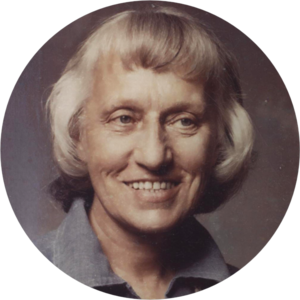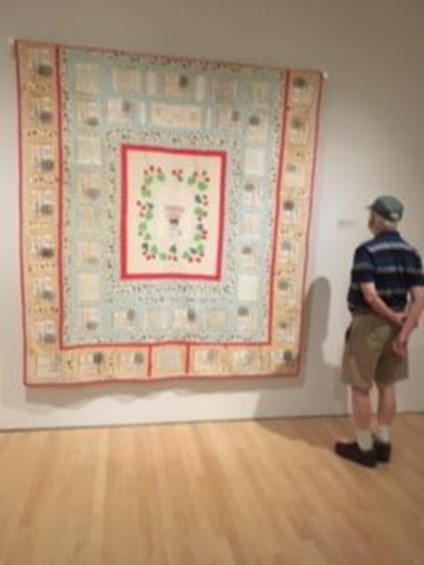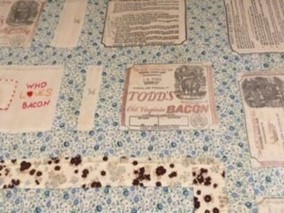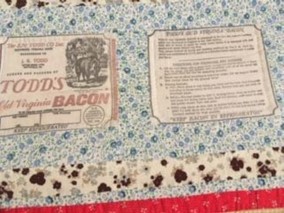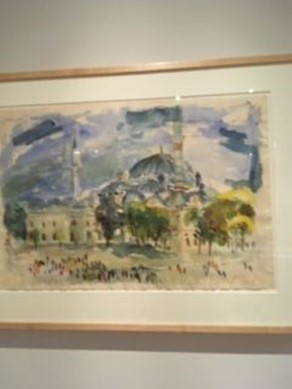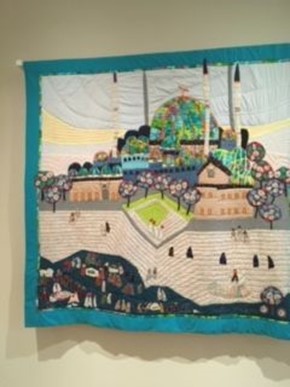I’m not ready to get back to work writing about the Honorees. I’ve been lucky enough (finally, after COVID lockdown) to have gone on some quilting vacations, and that has disrupted my focus. But since my trips were quilt-related, it should “count” if I share some of my takeaways.
My husband, Jack, and I stopped on our way elsewhere at the Milwaukee Museum of Art to see the current exhibit of quilts by Wisconsin native Pauline Parker. The Museum building itself is noteworthy—a marvel of modern “sculpture” designed by Spanish architect Santiago Calatrava. Maybe it’s the siting on the shore of Lake Michigan, but the structure reminds me of a cruise ship, and the unique Burke Brise Soleil (a moveable sunscreen) makes me think of a giant sail. The Windover Hall entry space would be cavernous but for all the glass.
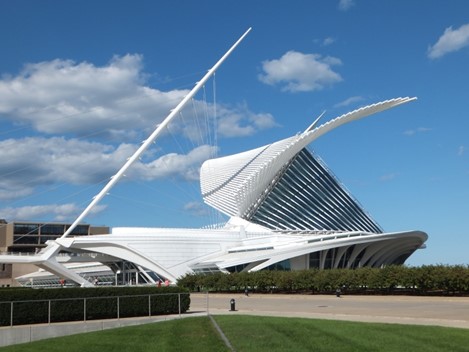
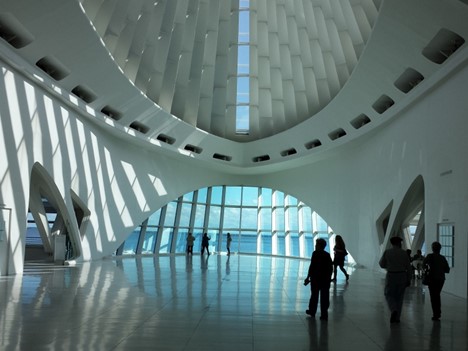
But this is about quilts, so let me show you some. There’s a link below (for later) to a wonderful virtual tour with commentary, but I’ll give you my thoughts now. First, you should know that Pauline Parker trained as a painter at the Art Institute of Chicago. Her quilting story is remarkable for her “journey”. Some quilters, myself included, find a style they like/ are competent at/ feel comfortable with, and stick to it with only minor forays off the track followed by a quick retreat to “normal”. Parker didn’t let herself get stuck; I think that “normal” for her was always something that wasn’t ordinary. She started quilting in traditional piecing style, but even in the early days, she had a whimsical eye. This simple quilt is a take-off on feedsacks: it’s composed of appliqued bacon bags. I never knew that bacon came in bags!
Parker progressed from traditionally pieced and appliquéd quilts into pictorial work, starting with a scene from a favorite vacation spot in Maine.
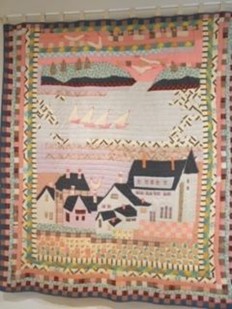
Then, she went back and took inspiration from her Art Institute days, interpreting her watercolors of foreign cities as quilts. The painting and the quilt pairs were displayed together, making for a thought-provoking comparison. (Why are some figures more accurately presented than others? Why didn’t she use more color in the sky in the quilt? Why did she alter the scale of the trees?)
Parker also tried her hand at political commentary quilts with this one depicting Anita Hill’s testimony at the Clarence Thomas confirmation (US Supreme Court) hearings. The artist’s statement says that the Committee wears blue suits because that showed up well on the TV cameras, and that the side pieces represent the women of the world who would be affected by the Committee’s decision. But what do the shoes and boots at the bottom mean? (Answer is in the virtual tour.)
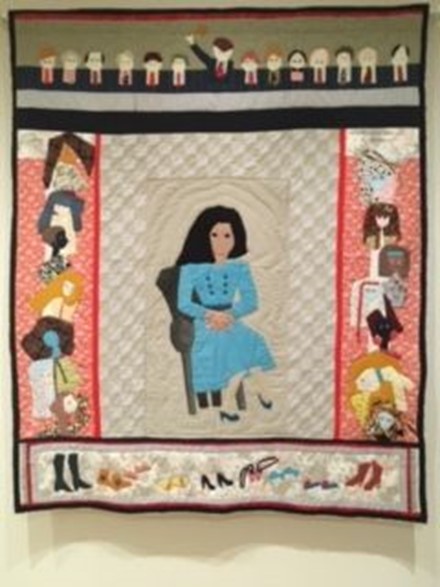
I think the quilts I liked best were from her nature-scenes period. They were very calming and accessible to my unimaginative mind. You will see all of these relaxing quilts in the virtual tour, but here’s just one for now.

“Birches” is a good quilt to show the shift to Parker’s final phase of quilting. In it, she purposely left the edges of the tree trunks frayed to mimic peeling birch bark, and she used reverse appliqué to create rabbit tracks in the snow. This was the beginning (if not temporally, at least in my mind) of her work with what I would call fabric manipulation.
Parker experimented with folding fabric to create the impression of an eyelid; she ruched to make “embroidery” on a dress. She wasn’t content with cotton prints or solids and regularly sought out poorly registered prints to use in simulating folds, and she worked with brocades, lace and hard-to-sew taffetas. Here’s a quilt that must have required several trips to the thrift shop for material. I’m surprised by all the dark colors, but maybe that’s just Parker’s selection; green seems very popular.
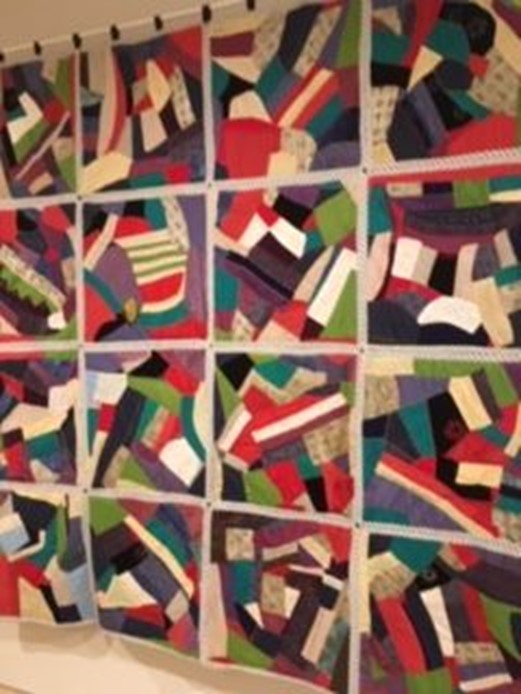
I can’t think of many other quilters whose work show so much diversity as Pauline Parker. I’m so glad that Jack and I took this little side trip. If you are able to go in person, the exhibit runs through December 5th; if you can’t make it to Milwaukee, take the virtual tour below.
And here’s a teaser for next time: I got an inspiration as we left the Museum, and it relates to the Honorees. Stay tuned.
Your quilting friend,
Anna
Virtual Tour. https://mam.org/exhibitions/details/quilts-pauline-parker.php
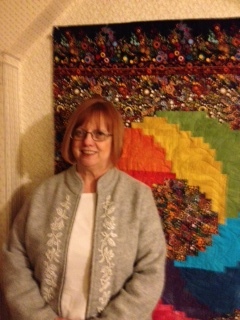
I’m Anna Harkins, and I volunteer on the Collections Committee at The Quilters Hall of Fame. What else would you like to know about me? Married, no kids; one old horse, retired, and live in a western suburb of Chicago. I’ve been quilting for about 20 years (I wish I could say I learned from my grandmother, but some of us come to this later than others), and I’m a quilt history dilettante, “a person who cultivates an area of interest, such as the arts, without real commitment or knowledge.” There are real scholars among you, and I have no pretensions to that level—hats off to you! But I am interested, especially in the people who have made up the quilt world here in the US, which is why I’ve agreed to blog for The Quilters Hall of Fame. I plan to write every week, and I hope you’ll join the discussions.

